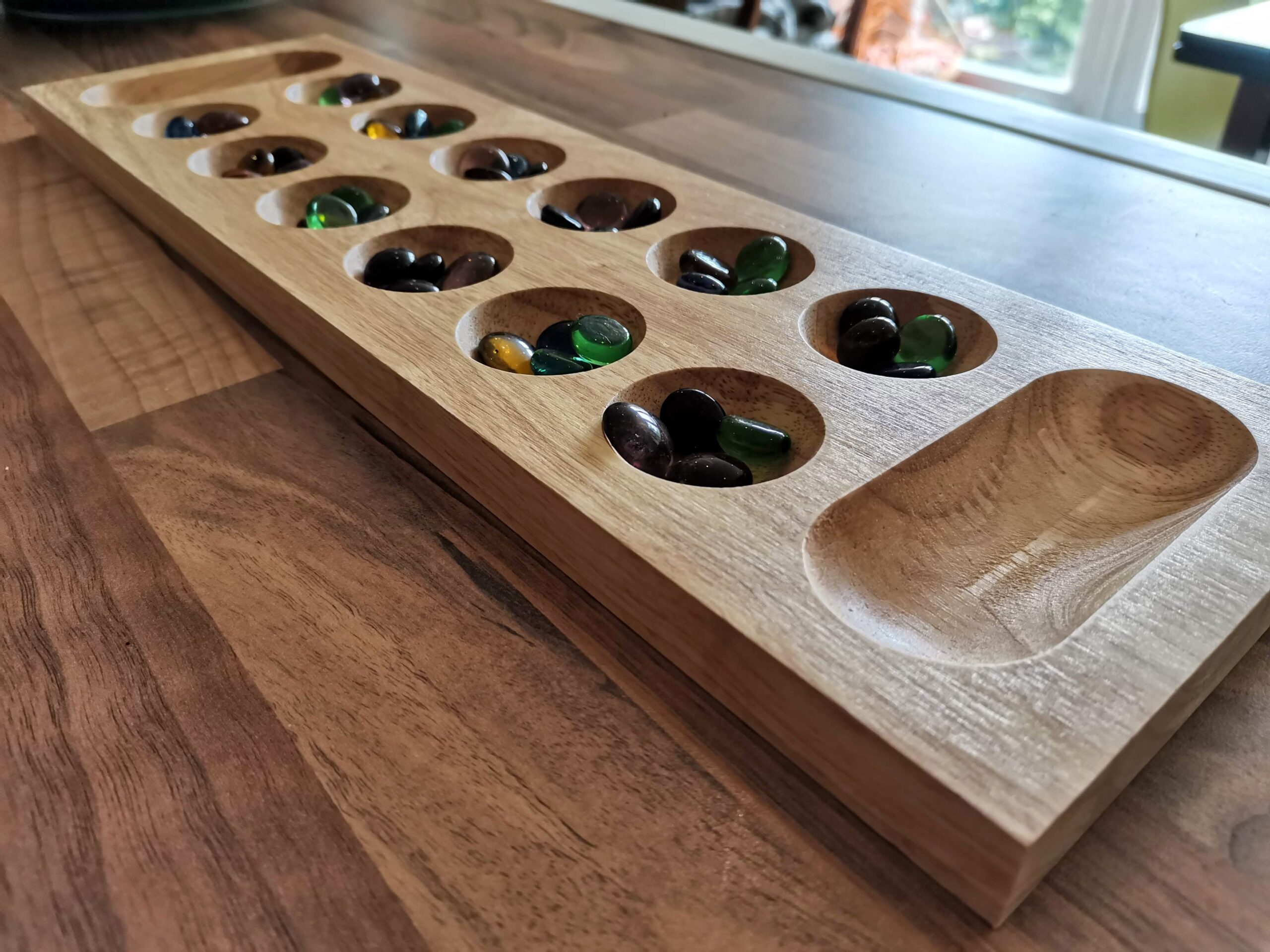Interview with Cogito Ergo Meeple & Solar 175 Preview
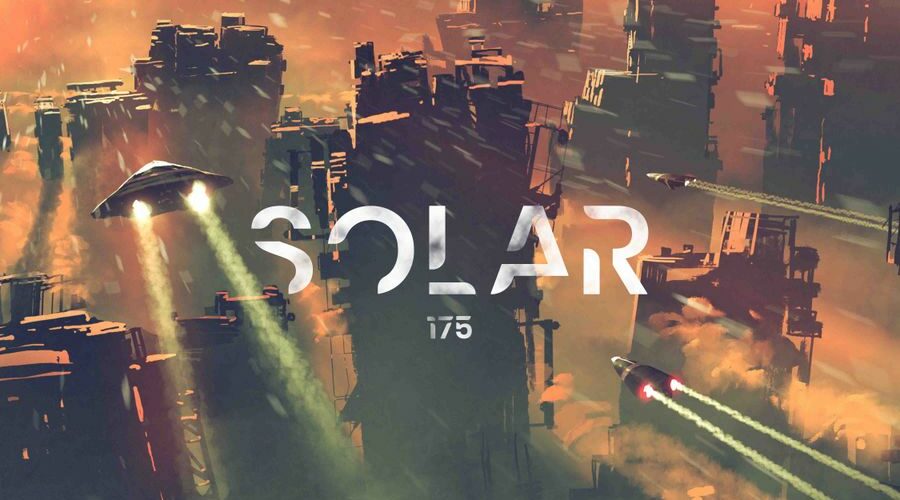
Solar 175 Preview
Disclaimer: this preview was written after playing with the Tabletop Simulator module for Solar 175. As such, I cannot comment on the quality of the components, and as always with my previews, all art, presentation and rules are subject to change before release.
The pitch for Solar 175 feels suspiciously like someone’s trying to create a game especially for me. A worker-placement, area control, bag-building, legacy game without permanent destruction of pieces, all wrapped-up in a space theme? I’m not saying “Shut up and take my money!“, but that list ticks a lot of boxes for me.
I sat down to play the game in Tabletop Simulator, and took the approach I like to do with this kind of preview – making sure I try to learn it without a teach. As far as I’m concerned, if a game’s about to launch on Kickstarter, that game should already have near-final rules. Armed with a PDF and a strong cup of coffee, I set off into space.
Forks in the road
The first thing that struck me with Solar 175 is how many different things there are to do in the game. It’s another of those games where you can’t possibly do everything there is on offer, so you need to choose a few things to concentrate on, and plan accordingly. Do you want to focus on mining, and make your money trading the mined resources? Maybe you want to plough everything you can into helping build the shared megastructure on the map? Then again, there’s a lot of space to make your presence felt, so perhaps placing outposts all over the place is the best way to go. After all, space – as the Hitchhiker’s Guide tells us – is big. Really big.
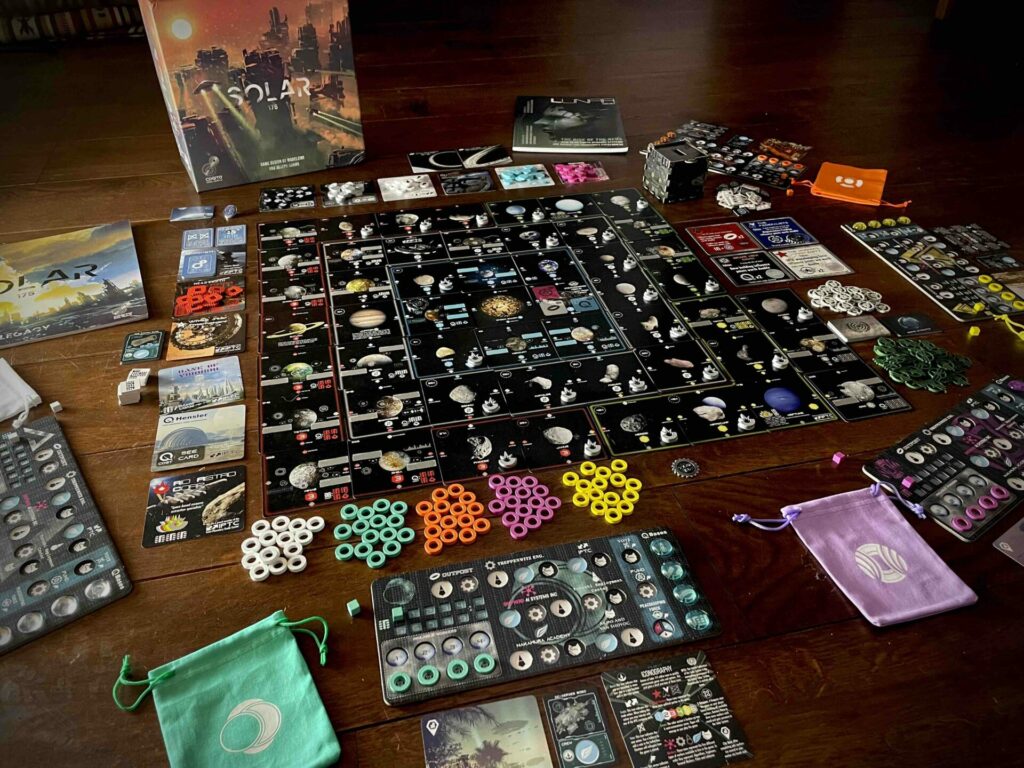
Whatever you choose to do, there’s a sense of all being in it together. At the same time thought, everybody has their own personal agenda. This is demonstrated best with the political parts of the game. The very mention of politics in a game is enough to send some people screaming from the table, so bear with me here. There’s a ballot box on the table, and performing a certain action lets you take a voting token, make your mark, and cast your vote in the box. Each of the three parties you can vote for have different vested interests, and the one who wins the vote at the end of the game will reward the people who’ve invested in the actions they’re in favour of.
Put into context, that could mean that you’ve slowly been contributing to the Peacekeeping force, earning military tokens. At the same time, you’ve been exercising your democratic right and voting for the Workers Union party. If that party wins the end-of-game election, instead of two VPs per military token you own, you get four, doubling your reward. I love this mix of public and private knowledge in a game.
Bag for life
Digging into the mechanisms a little here, I want to talk about the bag-building in Solar 175. It’s nothing new, and some games have turned it into an artform, games like The Quacks of Quedlinburg for example. Combining it with worker-placement isn’t something I’d have thought of as a natural fit, but it works really nicely here. Each of the types of workers is a different coloured disc, and any you earn throughout the game get stuffed in your bag with the rest of them. Using discs as workers in a game is a clever choice, as it means drawing them out of a bag is done blind, and also they sit nicely in what will be double-layer player boards.
Regular readers here will know I have a bit of a thing for double-layer player boards… *ahem*.
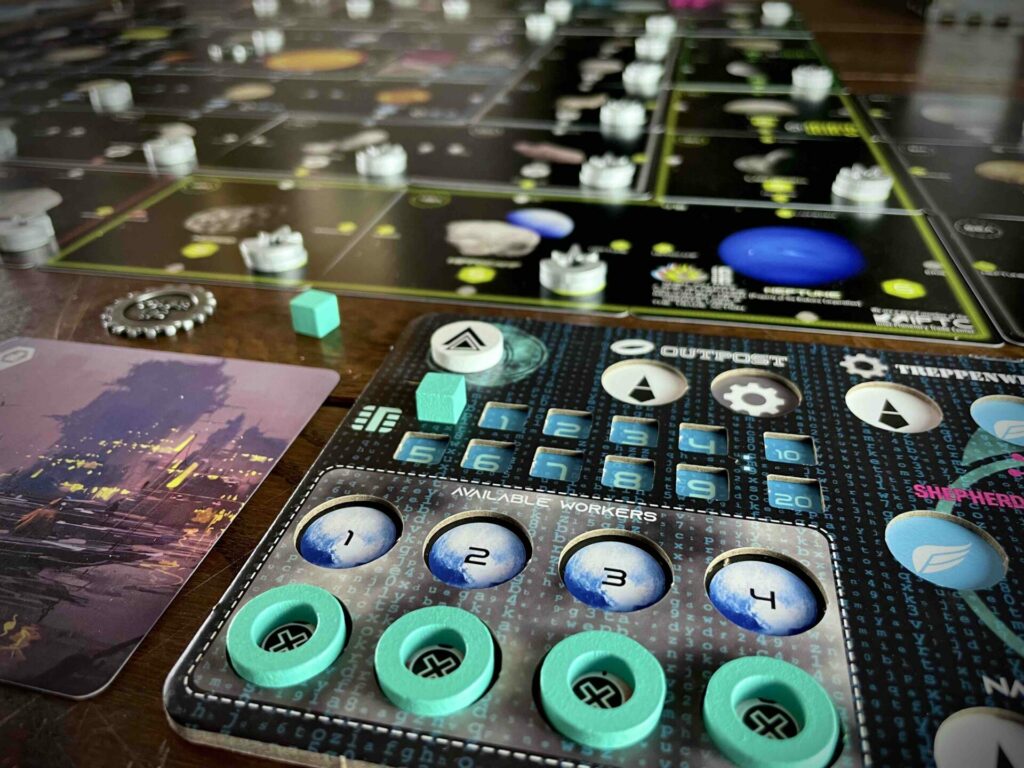
Using the bag this way, to draw workers for the coming round, is a nice change. It means you can certainly stack the deck in your favour, by putting in more of the colours you want, but you still have to cope with what happens when you draw something else. I like this style of reactive play, and having to think on your feet. It’s almost the opposite of something like Spirit Island, where you can see every single possible combination of plays for every move. Some actions clear extra spaces on your player board too, meaning more workers per round, and a better chance of getting what you want.
Final thoughts
Admittedly, I’ve only been able to play the first scenario in the game, so take everything I say here with a grain of salt. I can’t attest to the longevity, or how well the legacy elements play out, but having read the rulebook I can certainly see how it will work, and it looks great. The way the universe starts to expand, and more zones become available, looks great. A lot of Cogito Ergo Meeple’s focus with Solar 175 has been on the evolution of your game’s universe, and I’m excited to see it in action.
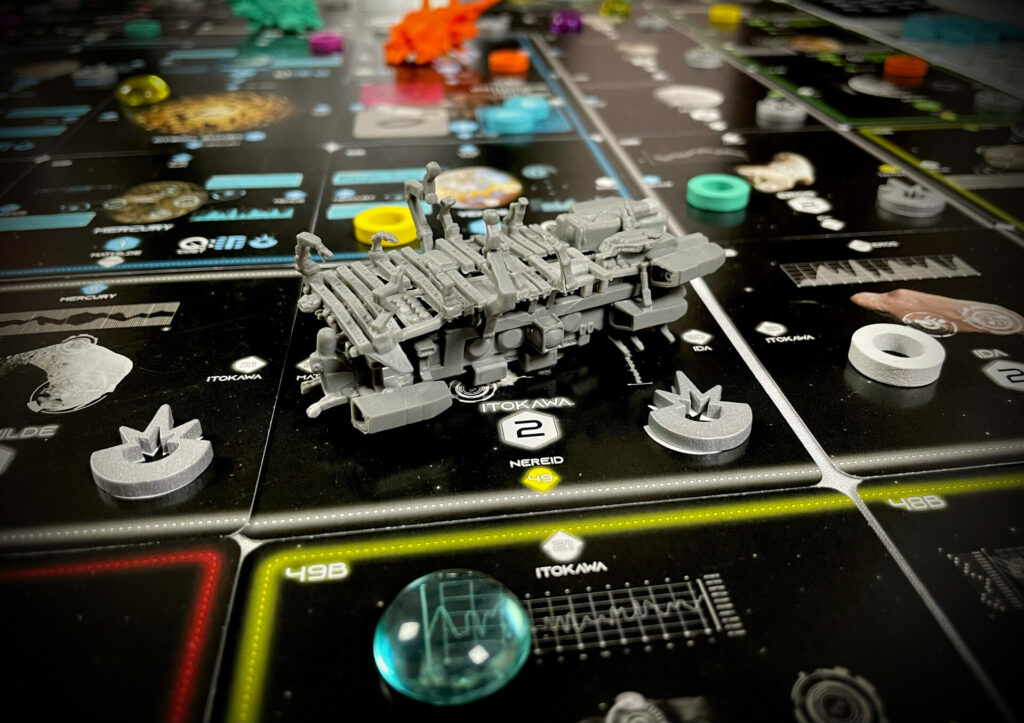
I really enjoyed my plays of Solar 175, and I can honestly say that I really want to play more. I love the way the workers work in conjunction with different types of workers to carry out actions. The way the market works is great, where players need to sell mined resources in order to make them available to others to buy. The combination of actions on your own boards with the shared boards and cards on the table creates a nice mix of outward interaction and introspective planning.
I can see this being a game like The King’s Dilemma, is as much as to get the best out of it, you want to play with the same regular group. The story and the world evolves as you play the game and make decisions. There is a solo mode included, and as a big proponent of solo boardgaming, I’m really pleased to see it. I wonder if the solo mode will have the same feel as the main game, however, because I think a lot of what makes this game tick is the people around the table. If you can get four or five of you regularly around a table, I think Solar 175 is shaping up to be something special, and I’m excited to see how it does.
Solar 175 launches on Kickstarter on 1st March 2022. You can sign up now on the project page to be alerted as soon as the campaign goes live.
No payment was offered or requested for the production of this preview. Thoughts and opinions are my own.
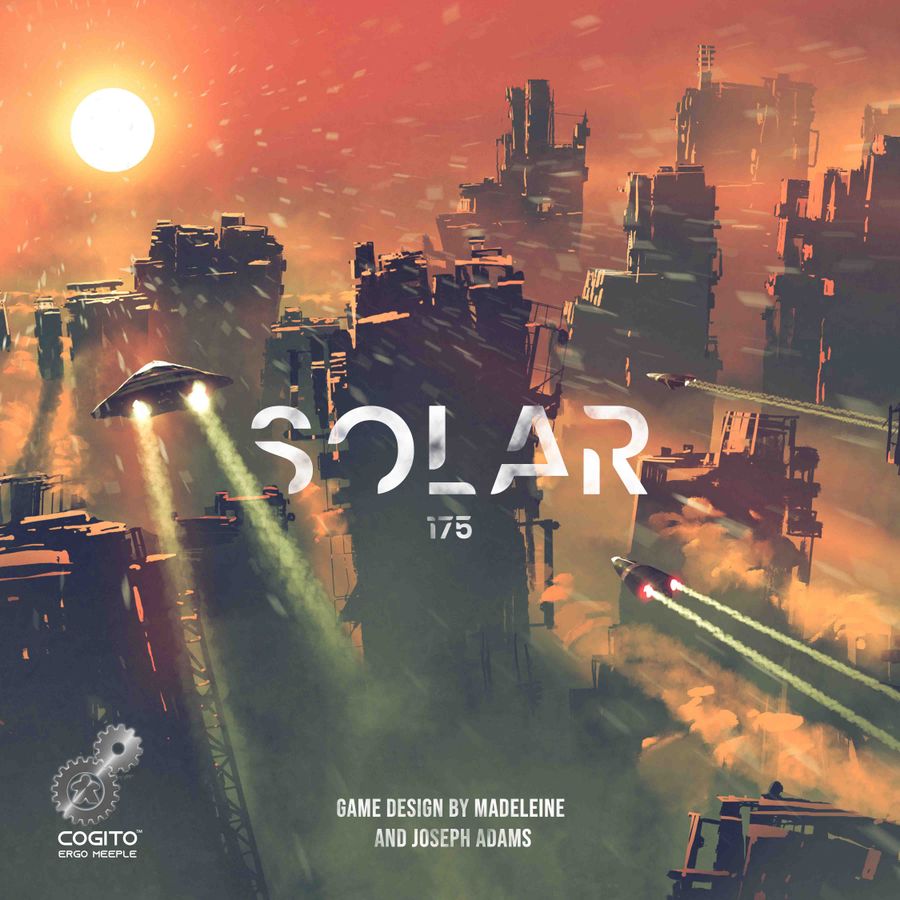
Solar 175 (2022)
Designers: Joseph Adams, Madeleine Adams
Publisher: Cogito Ergo Meeple
Art: Adam Beachey, Tithi Luadthong, Meta_Corp, RM Studio
Players: 1-5
Playing time: 60-120 mins







